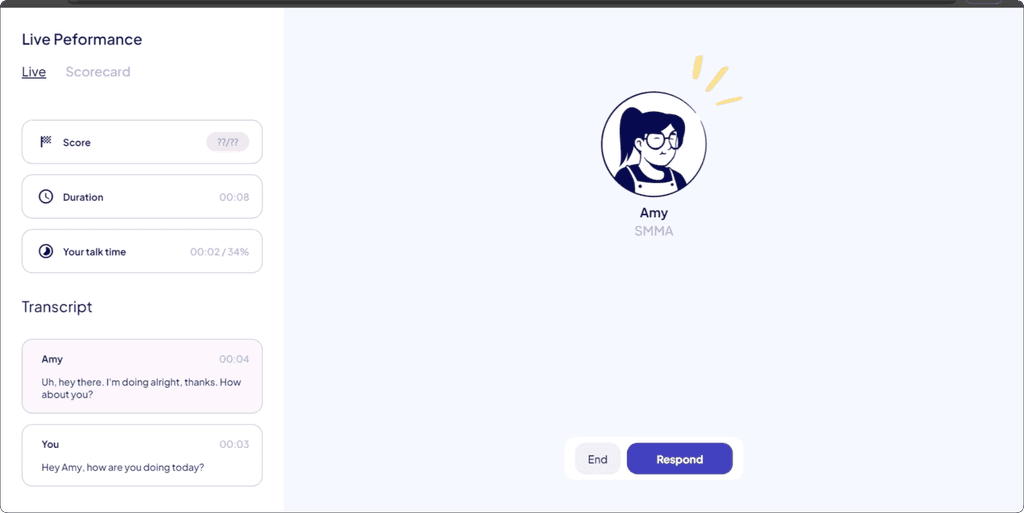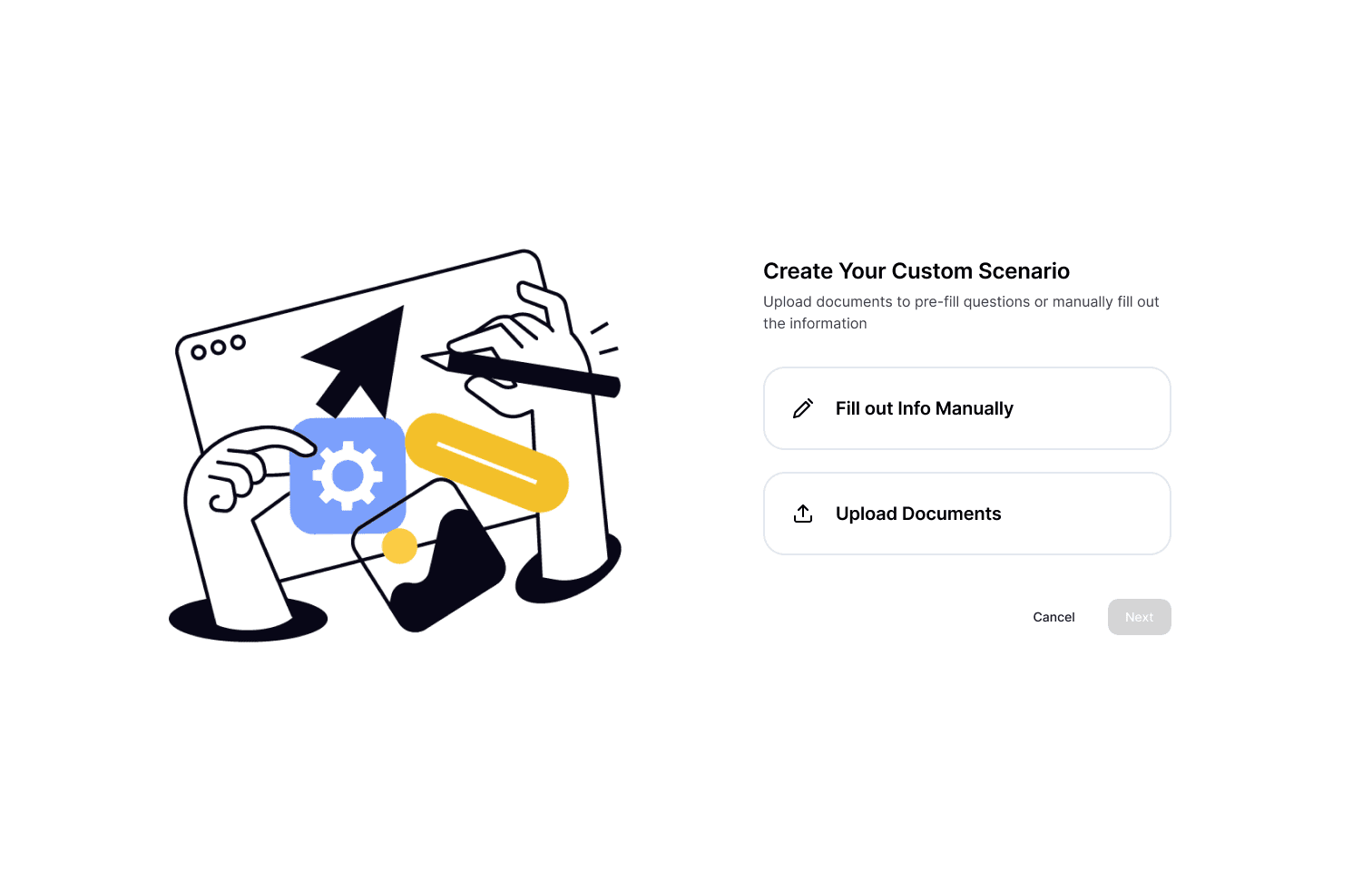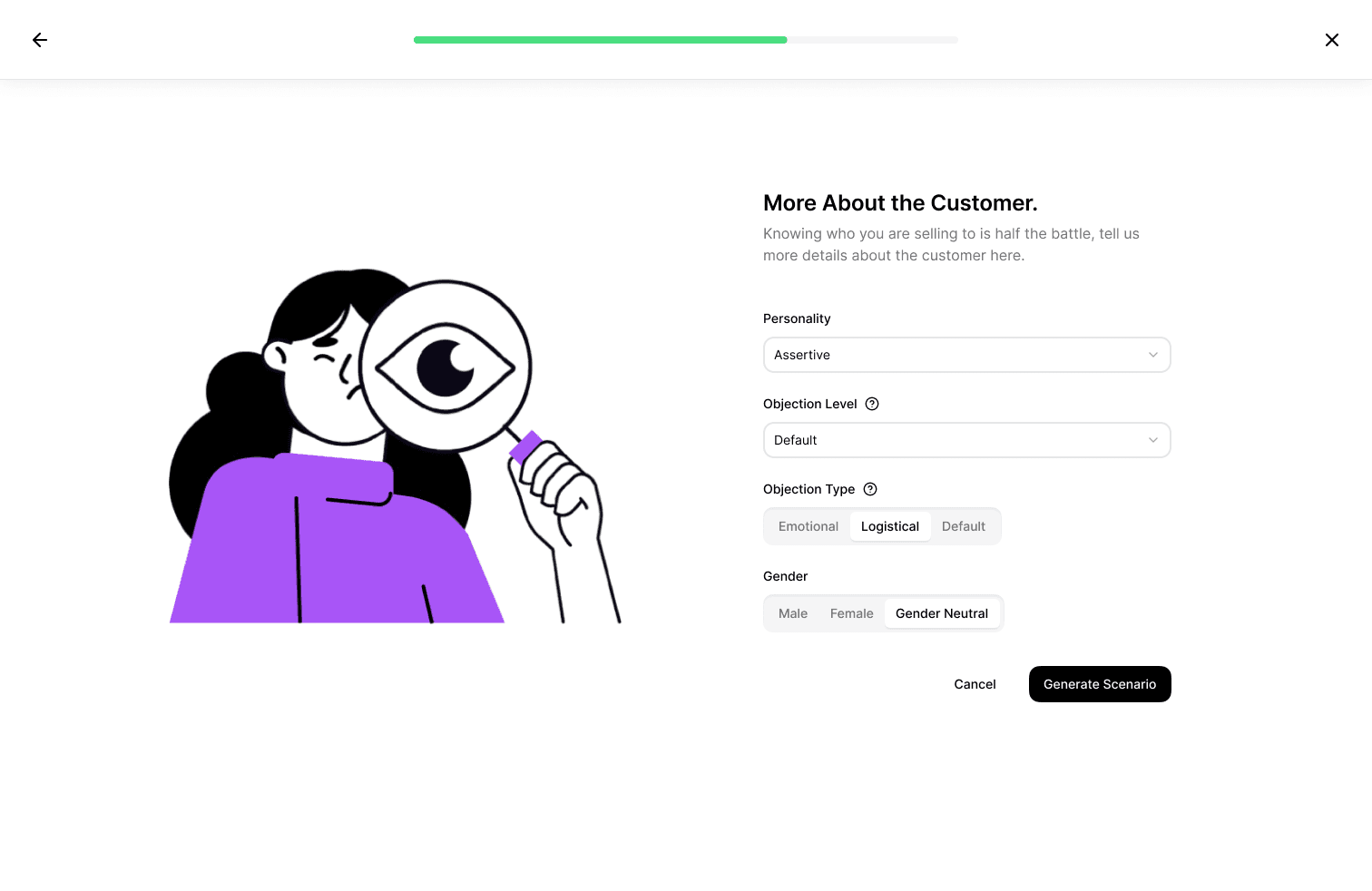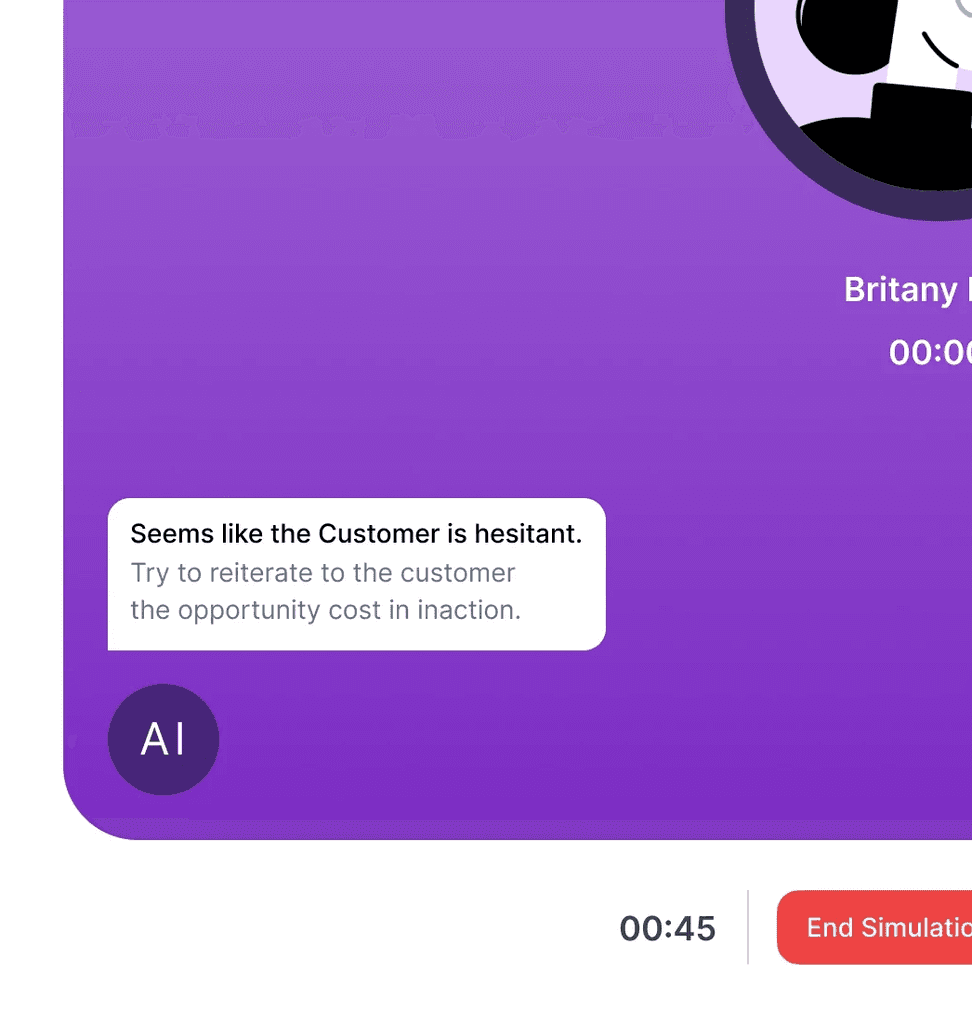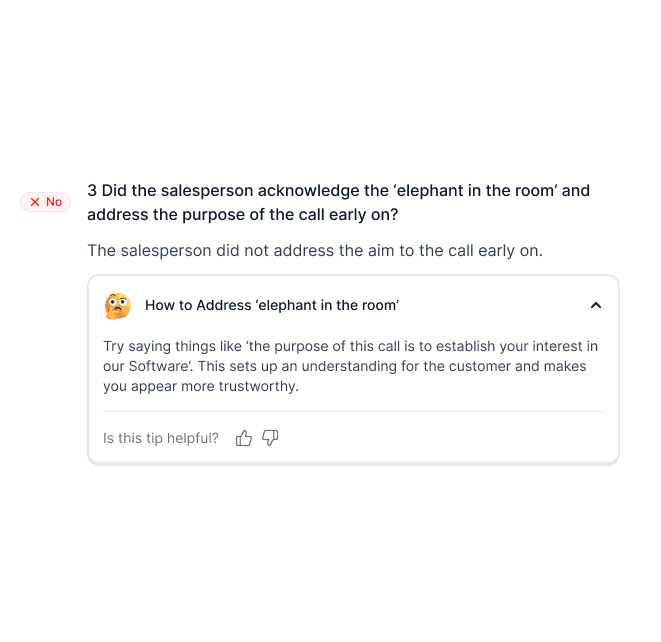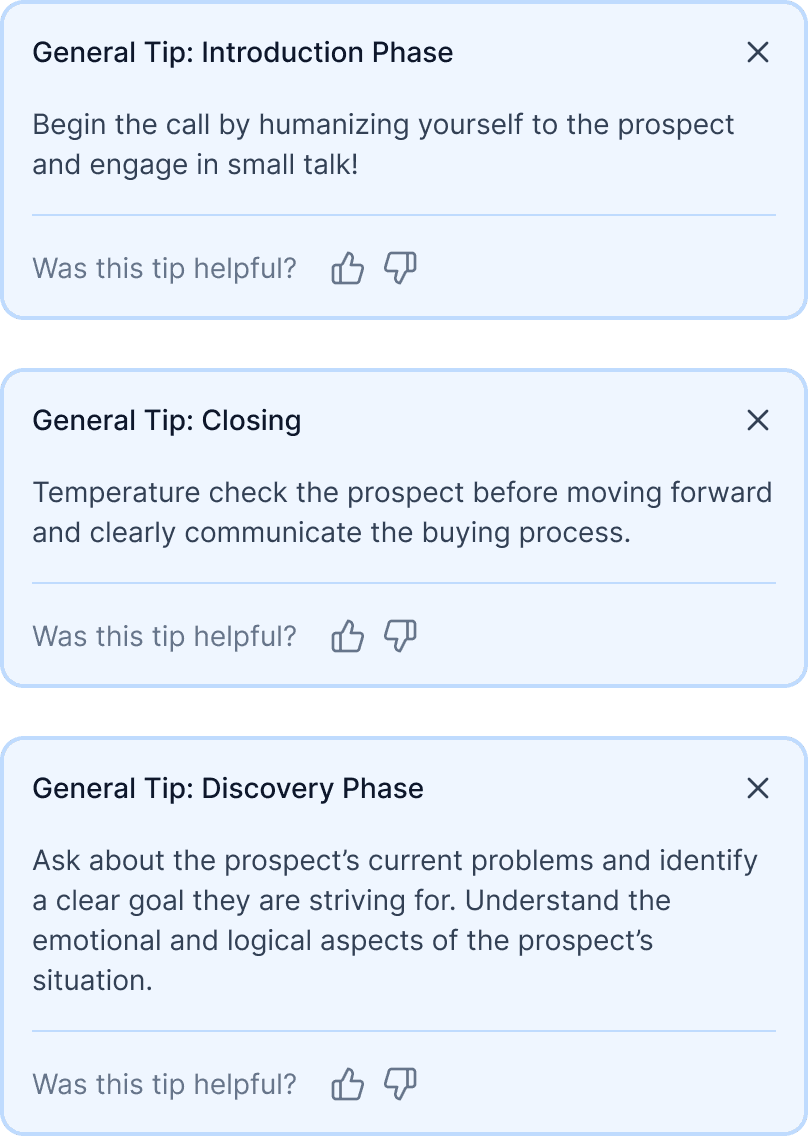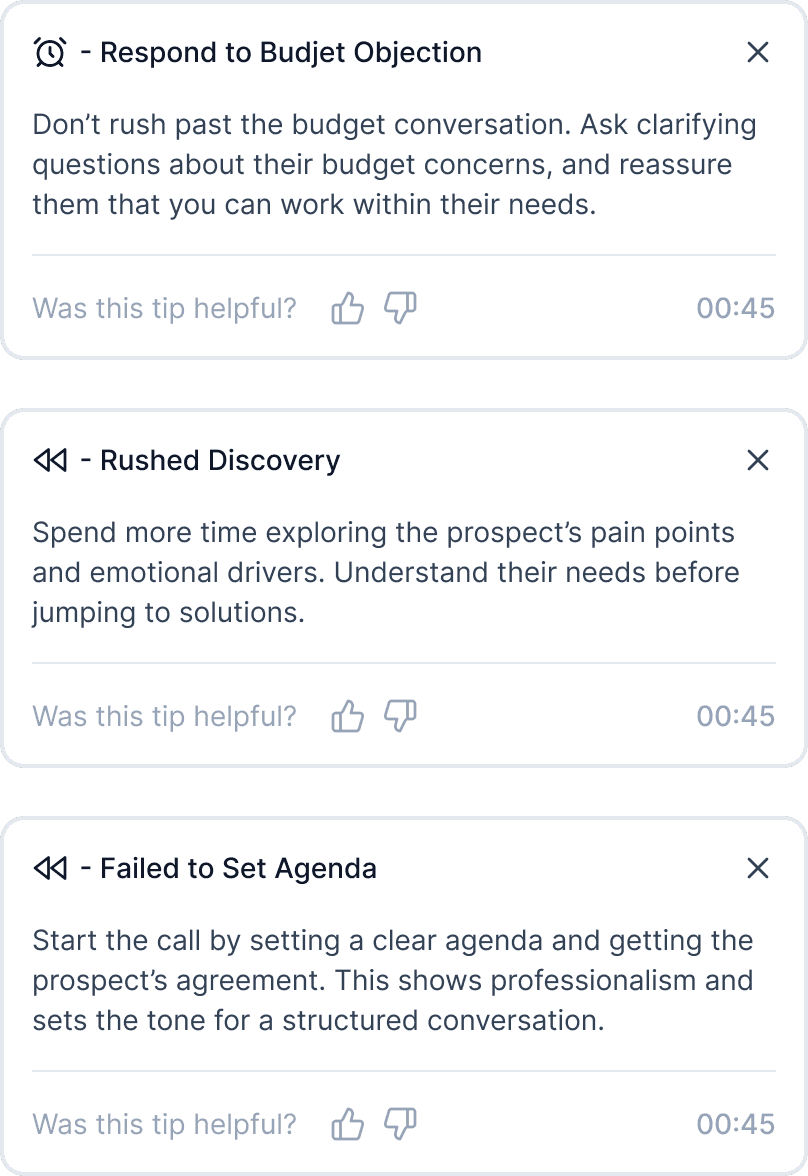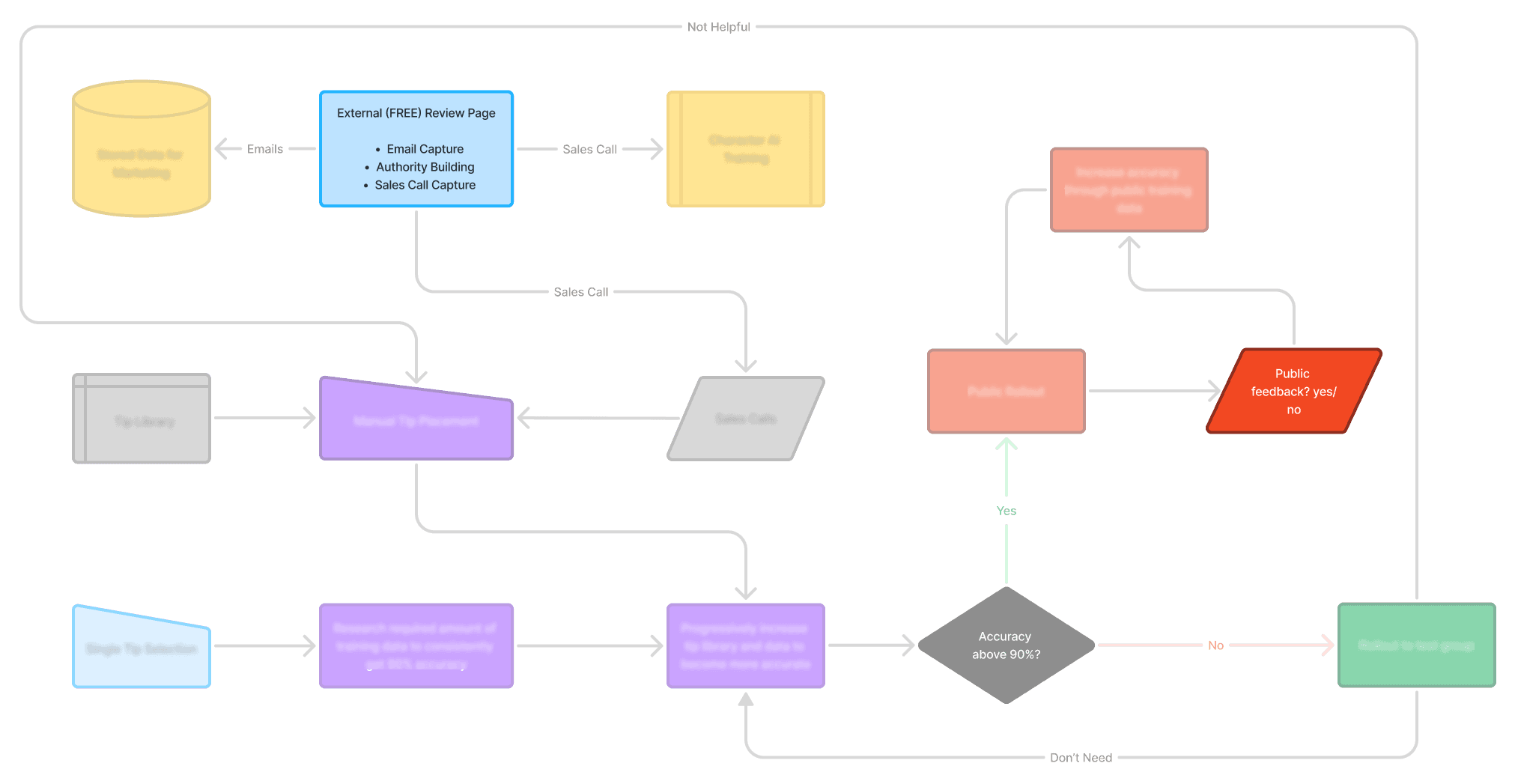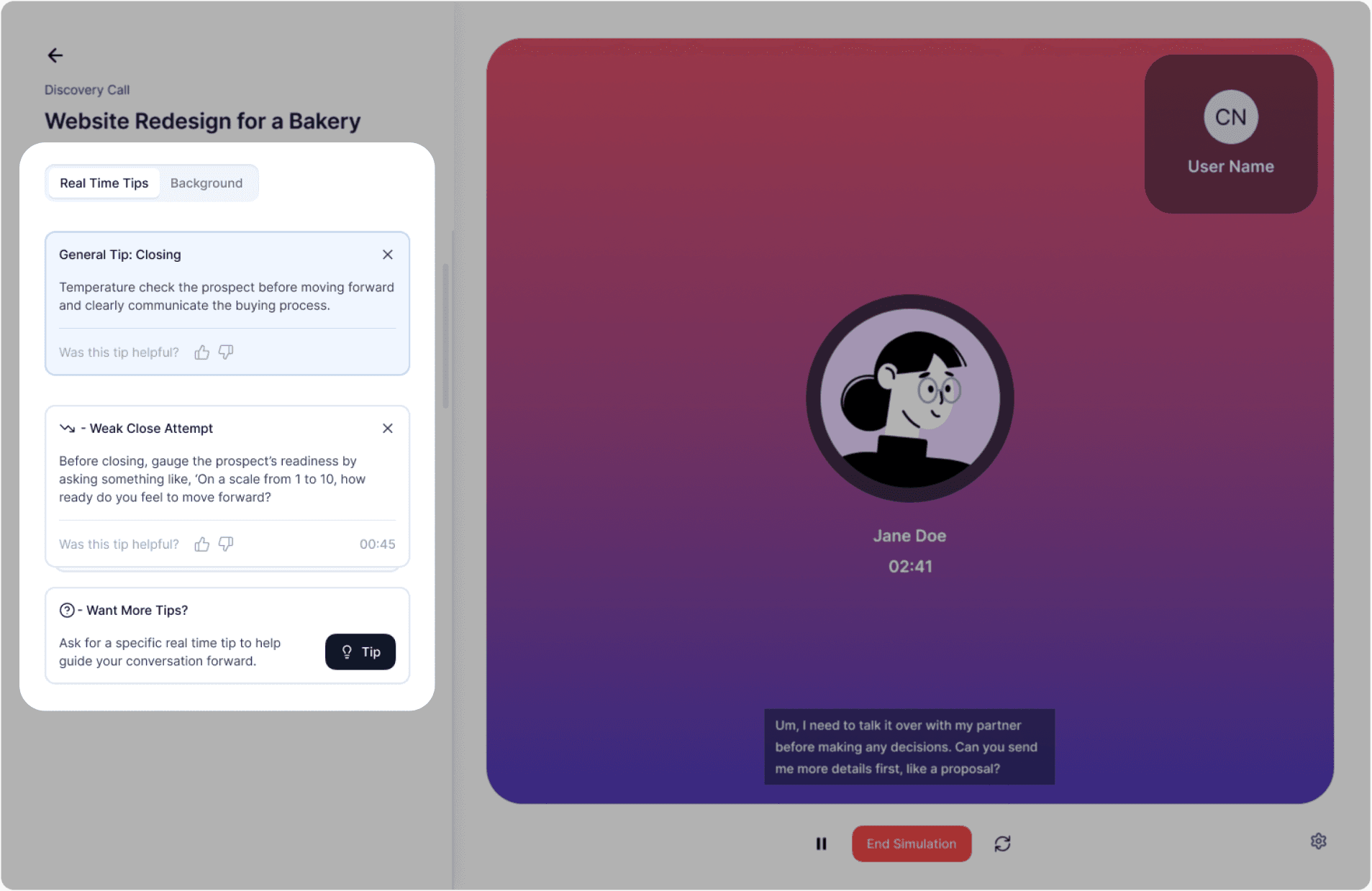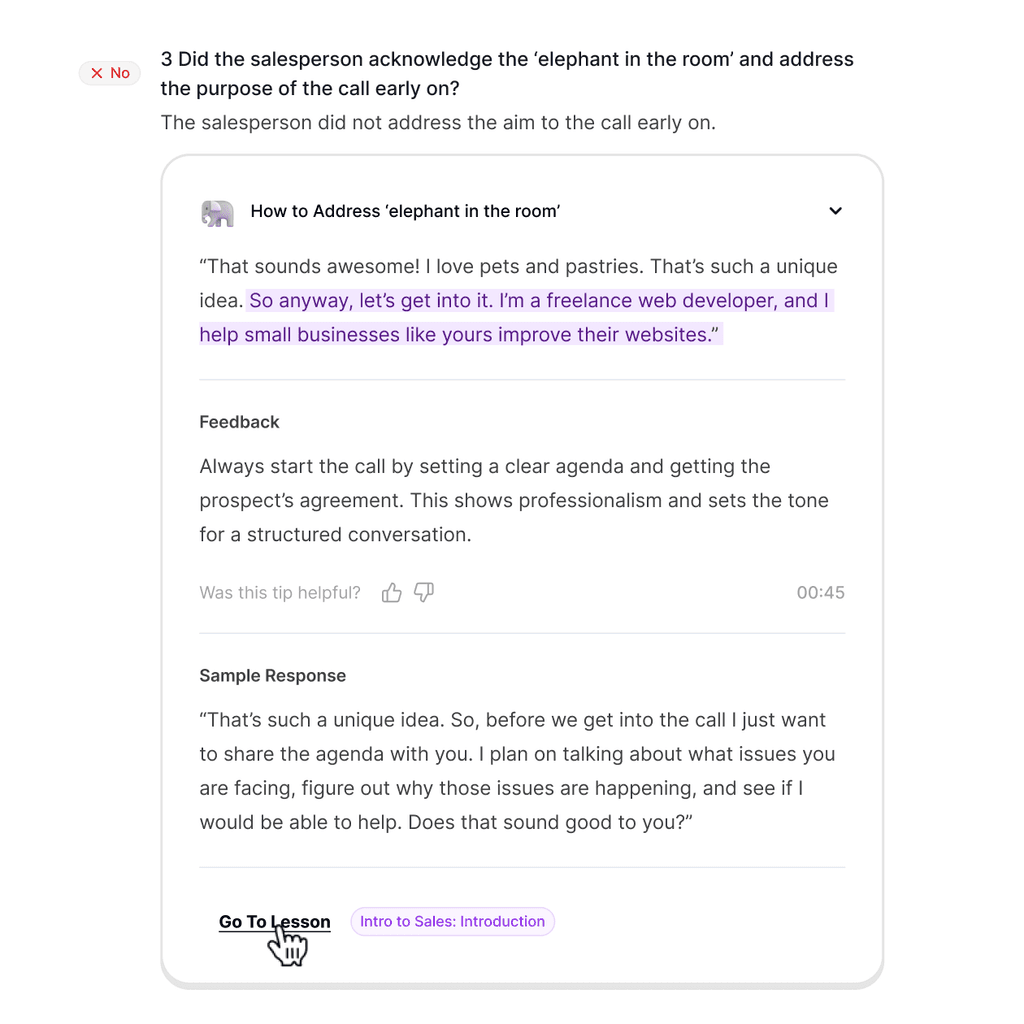Plutofy
Redesigning an AI sales training tool to create more business and user value.
Startup
Product Design
Overview
Sales practice, made easy
Plutofy is an early-stage startup helping users train their sales skills through AI-powered simulations. Despite having a promising MVP, the platform struggled to retain users after initial visits.
As the first Product Designer hire, I redesigned four core features end-to-end, boosting engagement and usability. These designs tested 5/5 during user testing and are launching in 2025.
Team
2 Engineers, Marketing
Role
Product Designer
Duration
Solutions
Core product features I designed
Call Simulation
Helping users improve their sales skills through simulated calls and feedback.
Lesson Flow
Guiding novice users step by step without overwhelming them.
Customized Experience
Customizing Product Experience Based on User's Level and Niche.
Context
Expanding the scope from UI to UX
The founder initially hired me to refresh the UI of the AI sales training tool that simulated real life scenarios and provided feedback. However:
Current features brought little user value because they did not target problems unique to our demographic.
I built trust with the founder and expanded the scope to encompass both UX design and product strategy.
Old UI
Problem Identification
Finding better product opportunities to target our audience
While Plutofy was built for individual freelancers, small businesses, and casual learners, the current product did not cater to this user group. I was able to shift the founder's mindset to better align with our users’ needs.
Key Findings:
Currently, the product merely copies the competitor’s demos.
Our audience is inherently different and requires different approaches.
Competitors assume sales experience and familiarity with industry techniques, all luxuries our users do not have.
Through interviewing, I discovered that general 'sales training’ is unhelpful for most users.
Ideation
Adding in setup for custom simulations, instead of theoretical ones.
User interviews revealed that each niche where people sell goods or services faces distinct challenges—making one-size-fits-all sales training ineffective.
To maximize product effectiveness, users need custom simulations to practice upcoming important sales calls before they happen.
Ideation
Pitching a new value proposition of real-time coaching
To mimic the feedback and support you would get from an experienced sales mentor, I pitched 3 different ways to simulate real-time coaching:
Concept #1
An AI mentor character in the call to guide direction and correct mistakes real time.
Concept #2
Real-time tips that pop up when users make mistakes during calls.
Concept #3
Give users suggested approaches when they fail to complete certain objectives.
Challenges
Reducing API Costs
With limited data, the tips required near-constant API calls, making it prohibitively expensive. To reduce costs we came up with a 2-pronged approach:
Preset Tips
Gave general guidance depending on the phase of the call. (Easy to train and deploy)
Real-time Tips
More specific but costly tips (Given only when users press the tip button to limit cost)
Product Strategy
Training the Model
I identified the need for better data to train our model after discussing the product’s technical limitations with the founder. To address this, I proposed two data collection strategies within Plutofy:
Call Collection Feature:
We offered to score users' real sales calls for free, allowing us to gather valuable training data.
Tip Rating System
Users rated real-time and sales report tips, helping us refine suggestions based on usefulness.
Data Collection Feedback Loop Flow Chart
Prototype & Testing
The concept resonated but most users felt overwhelmed by live tips
The concept tested well, however all participants had one complaint…
Key Findings:
5/5 users felt overwhelmed with information when both tips and the call happened simultaneously
Users DON'T want to be interrupted during the simulated calls.
Generic preset call scenarios are not helpful for experienced users since they are only interested in improving in their selling niche.
5/5 users felt overwhelmed with information when both tips and the call happened simultaneously
Insights from Testing with Users
After synthesizing the key findings from testing. I had 3 realizations.
01
02
03
Product Strategy
Solving Insight #1: Doubling Down on Novices
Since novices and experienced users had such different needs, we had to prioritize our product towards one group.
Given that the majority on our waitlist was novices and no other beginner trainer tools existed in the market, I convinced the founder to focus even more on novice salespeople.
Solution
Solving Insight #2: How to Train Novice Users without Overwhelming them
After our users firmly rejected the idea of ‘real-time tips’, I pitched the new 'learning flow'. A seamless experience that guides novice users step by step through the sales process to get them ready for a full simulated call.
Solution
Solving Insight #3: Customizing Product Experience Based on User's Level and Niche
The founder agreed to prioritize novice users, but he also wanted to find a way to repurpose the existing custom simulations to suit their needs.
As I explored this challenge, I came up with a simple yet effective solution: tailor the product experience to the user's skill level and sales niche.
Prompt users to revisit specific lessons when associated mistakes are made
Introduce users to create custom simulations as part of the lesson curriculum
Conclusion
5/5
Final solutions tested well with users.
100%
Founder loved the shifted direction and proposed changes.
Next Steps
Product under development, planned launch during Q1 2025.

